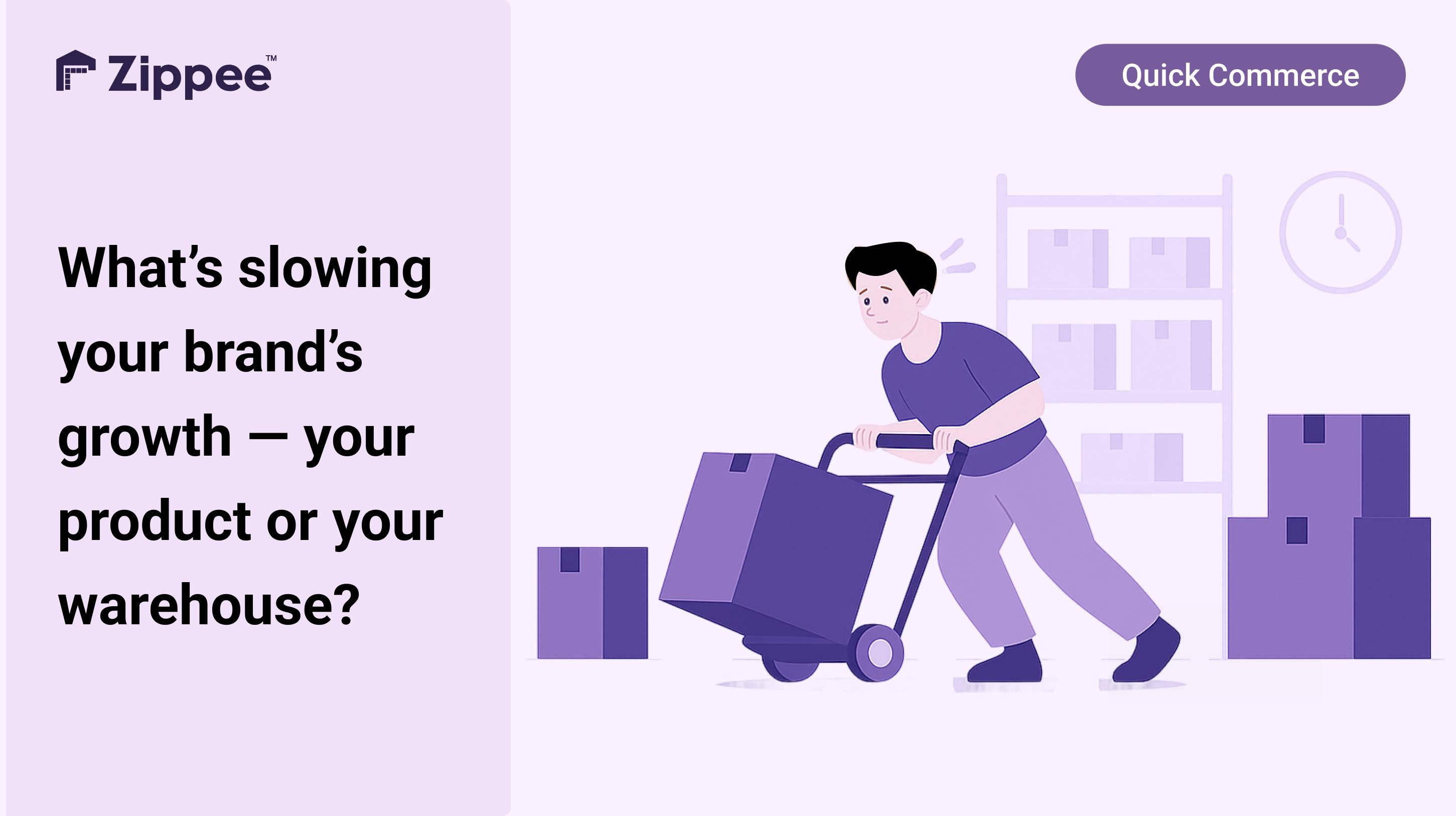
Quick Commerce vs Traditional Warehousing: What Every D2C Brand Needs to Know :
The explosive rise of quick commerce logistics has forced a reckoning for ecommerce brands and their fulfilment strategies. While traditional warehousing models powered the first wave of online retail, they’re fundamentally mismatched for the new era of instant, hyperlocal delivery.
As consumer brands race to offer 1-hour and 2-hour delivery, understanding these limitations and how to overcome them is critical for any D2C brand aiming to stay relevant.
The Traditional Warehousing Model: Built for Scale, Not Speed
Traditional ecommerce warehousing is designed around centralised, large-scale facilities. These hubs are typically located on city outskirts, optimised for bulk storage and cost efficiency. Orders are picked, packed, and shipped via regional or national courier networks, often taking one to five days to reach the customer.
This approach works for planned purchases and non-urgent deliveries, but it’s fundamentally at odds with the demands of quick commerce logistics. When customers expect their orders in under an hour, even the most efficient centralised warehouse can’t bridge the gap.
Key limitations of traditional warehousing for quick commerce:
- Distance from customers: Centralised hubs mean longer last-mile journeys, making 1-hour or 2-hour delivery nearly impossible.
- Slow inventory turnover: Bulk stocking leads to slow-moving inventory and higher risks of stockouts or overstock, especially when demand is hyperlocal and volatile.
- Batch processing: Traditional models favour batch order processing and scheduled dispatches, not the real-time, on-demand fulfilment that hyperlocal delivery for D2C brands requires.
Quick commerce logistics flips the script by prioritising proximity, speed, and real-time responsiveness. Instead of relying on a few massive warehouses, leading consumer brands are now deploying networks of micro-fulfilment centres, also known as dark stores, embedded within urban neighbourhoods.
What sets quick commerce logistics apart:
- Hyperlocal inventory placement: Stock is distributed across multiple small hubs, dramatically reducing the distance to the customer and enabling true hyperlocal delivery for D2C brands.
- Real-time inventory management: Advanced systems track inventory at each location, enabling rapid replenishment and minimising both stockouts and wastage.
- On-demand dispatch: Orders are picked and delivered as soon as they’re placed, often within 60 minutes, thanks to dedicated last-mile fleets and smart route optimisation.
For example, Zippee has enabled leading Indian consumer brands to offer 60-minute and 120-minute delivery, even in complex urban environments, by leveraging a purpose-built quick commerce delivery partner network (see: Top Quick Commerce Logistics Partners for D2C Brands in India 2025)
Why Traditional Warehousing Can’t Adapt
Many brands try to retrofit their existing warehousing systems for quick commerce by adding more delivery slots or speeding up order processing. However, without decentralising inventory and embracing real-time, hyperlocal logistics, these efforts rarely succeed.
Why adaptation fails:
- Proximity is non-negotiable: No amount of process optimisation can overcome the physical distance between centralised warehouses and end customers.
- Legacy tech stacks: Traditional warehouse management systems aren’t built for real-time, multi-location inventory visibility or dynamic order routing.
- Cost inefficiency: Attempting to force quick commerce through traditional infrastructure often leads to higher costs and lower customer satisfaction, eroding margins for consumer brands.
Quick commerce logistics requires a fundamentally different operating model – one that prioritises speed, flexibility, and local relevance over sheer scale.
The Unique Demands of Quick Commerce Delivery Partners
Partnering with a specialised quick commerce delivery partner is essential for brands aiming to meet ultra-fast delivery promises. These partners bring:
- Hyperlocal fulfilment expertise: They understand how to manage inventory at a granular, neighbourhood level.
- Integrated tech stacks: Real-time tracking, AI-driven demand forecasting, and automated dispatch are standard.
- Scalable last-mile operations: Delivery fleets are dynamically deployed based on live order volumes, ensuring efficiency even during demand spikes.
Zippee, for instance, powers quick commerce logistics for consumer brands across India, enabling 1 hour, 2 hour and same day delivery directly from brand websites or stores. This not only boosts speed but also reduces RTO rates and improves customer loyalty (see: “Mistakes to Avoid in Quick Commerce Logistics for Ecommerce Brands” on zippee.delivery).
The Cost Factor: Balancing Speed and Profitability
A common misconception is that quick commerce logistics is always more expensive. While it’s true that operating multiple micro-fulfilment centres requires upfront investment, the benefits often outweigh the costs:
- Reduced last-mile expenses: Shorter delivery distances mean lower fuel and labour costs per order.
- Higher conversion rates: Faster delivery drives more impulse purchases and repeat orders, especially for D2C brands.
- Lower RTO rates: Real-time tracking and flexible delivery windows reduce failed deliveries, a major cost drain in traditional models.
Zippee’s experience with top Indian consumer brands shows that, with the right quick commerce delivery partner, brands can achieve both speed and sustainable unit economics.
The Future: Agility, Technology, and Customer-Centricity
Quick commerce logistics is not just a trend—it’s a strategic imperative for modern consumer brands. As the lines between ecommerce and instant delivery blur, brands that invest in hyperlocal delivery for D2C brands will win on both speed and customer loyalty.
Key takeaways for D2C brands:
- Centralised warehousing is obsolete for instant delivery.
- Hyperlocal fulfilment, real-time inventory, and agile last-mile operations are the new standard.
- Partnering with a quick commerce delivery partner like Zippee unlocks true 1 hour and 2 hour delivery at scale.
For brands ready to leap, now is the time to rethink your logistics stack, embrace hyperlocal delivery, and deliver the experience today’s consumers demand.





.png&w=256&q=75)













